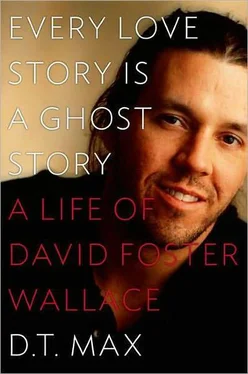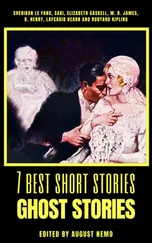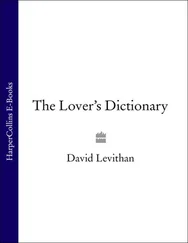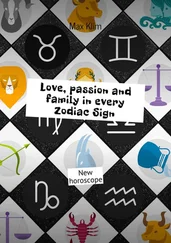The work of Infinite Jest almost done, Wallace was casting around for new projects. The state fair piece and the sections of Infinite Jest that had run in journals had made him in demand. He said no to a week at a nudist colony and a chance to attend the launch of a scent endorsed by Elizabeth Taylor at an air force base, the similarity of these offers sparking the suspicion, as he later told an interviewer, that all the magazine editors in New York read each other’s mail. 14Wallace was vulnerable to being wanted and he had liked all the new readers his magazine work got him. So he agreed to write a piece for Details about the tennis star Michael Joyce (it was ultimately published in Esquire ), and another on the U.S. Open for Tennis , a magazine that he’d devoured as a teenage player. Both magazines were looking for a piece of the Wallace voice, that tone of a sensitive, sincere genius operating in second gear. His nonfiction persona was, as Wallace told an interviewer, “a little stupider and shmuckier than I am.” He became adept at the back-and-forth of magazine work, limiting the psychic cost of the editing by calling and leaving long messages at night on his editors’ voice mails.
Wallace also began a review of Joseph Frank’s four-volume biography of Dostoevsky for the Voice Literary Supplement , where Lee Smith, the editor of Signifying Rappers , was now working. Wallace had over the years become deeply attracted to the Russian’s writing and life. The parallels between Dostoevsky’s and his own certainly caught his eye, as they had at Granada House. Wasn’t his time there comparable to Dostoevsky’s exile in Siberia, where the Russian had first seen how much he had in common even with the most desperate souls? He left this implied in the lengthy article he produced:
What seems most important is that Dostoevsky’s near-death experience changed a typically vain and trendy young writer — a very talented writer, true, but still one whose basic concerns were for his own literary glory — into a person who believed deeply in moral/spiritual values.
Wallace spent most of July on the essay and became more and more impressed. Here was a writer impossible in modern America, one earnestly and unapologetically moral. He wrote in a notebook around this time.
Hyperc[onsciousness] makes life meaningless […]: but what of will to construct OWN meaning? Not the world that gives us meaning but vice versa? Dost embodies this — Ellis, Leyner, Leavitt, Franzen, Powers — they do not. Their fictions reduce to complaints and self-pity. Dostoevski has BALLS.
He wanted to extend the point he had made in “E Unibus Pluram” two years before. Then he had mostly diagnosed a disease; now he was giving a model for the cure. American writers were still content to describe an ironic culture when they should be showing the way out. They had still not discovered, as he wrote in Infinite Jest , that “what looks like the cage’s exit is actually the bars of the cage.” “Who is to blame,” he concluded in his VLS piece, “for the unseriousness of our serious fiction? The culture, the laughers? But they wouldn’t (could not) laugh if a piece of morally passionate, passionately moral fiction was also ingenious and radiantly human fiction.”
In August the copyedited manuscript of Infinite Jest arrived. Wallace had been dreading this day. He had written Pietsch in the winter that if his editor would give him the name of “your/our copyeditor…I’ll start sending candy and sweet nothings now.” He had sent a prophylactic note along, almost a compendium of Wallace stylistic tics, in the hopes he could limit disagreement:
To Copyeditor:
Hi. F.Y.I., the following non-standard features of this mss. are intentional and will get stetted by the author if color-penciled by you:
— Single quotation marks around dialogue & titles, with double q.m.’s inside — reversal of normal order.
— Such capitalized common nouns and verb-phrases as
Substance, Disease, Come In, Inner Infant, etc.
— Neologisms, catachreses, solecisms, and non-standard syntax in sections concerning the characters Minty, Marathe, Antitoi, Krause, Pemulis, Steeply, Lenz, Orin Incandenza, Mario Incandenza, Fortier, Foltz, J.O. Incandenza Sr., Schtitt, Gompert.
— Multiple conjunctions at the start of independent clauses.
— Commas before prepositions at the end of sentences.
— Hyphens to form compound nouns.
— Sentence-fragments following exceptionally long sentences.
— Inconsistent paragraphing, with some extremely long paragraphs. 15
Now he braced himself for several months of unraveling the mistakes and foolish consistencies of people who knew grammar less well than he, a fear that was shortly confirmed. He wrote his Boston friend Debra Spark in October that he was “in the 8th circle of page-proof-proofreading hell. Never again anything over 150 pages.” He wheedled and begged Pietsch for more time, presenting evidence that it was the publisher who had messed things up. “The more I proof these page proofs, the more convinced I get that it would be a mistake to disseminate bound galleys before typos and solecisms are corrected,” he wrote Pietsch. “I’m going over each word and line with a loupe, almost,” he assured him. To Alice Turner, to whom he sent the bound proofs, he claimed in December to have caught “about 47,000 typos in the bound galley.” (Later he would tell an interview from Time that he had corrected all but one of “about 712,000.”) One of his graduate students, Jason Hammel, remembers going over to Wallace’s house to find him with loose pages of Infinite Jest spread out in front of him, watching the movie Beethoven over and over on a TV/VCR combo from Rent-A-Center. He told Hammel it was the only way at this point he could bear to read the book. His eyes, by now, he complained to the chief copy editor, were “wobbling like a vestibulitiser’s.”
Wallace was not the only member of his family to play copyeditor. He had also tried to test-drive the family’s response to the book by hiring his sister for that task even before the manuscript had been finished. She immediately saw what was going on and asked him if he really felt this was the right way to deal with his anger at his mother; Wallace just shrugged. But he still felt he had to give his mother the manuscript to read. He sent it to Urbana and waited. In December, six weeks later, he wrote Alice Turner that he was worried still to have heard nothing, “wholly ominous given our family’s normal communication grid; I fear someone sees more autobiography in it than there is.” 16
As the February publication of Infinite Jest neared, Wallace felt neither he nor his book was ready. Any hint of impending clamor made him glad he was in Illinois, safe from curious eyes and the intoxications of admiration and publicity. But Little, Brown had the job of making sure Wallace felt necessary or at least familiar to literary readers. He had not had a book of fiction come out since 1989. The massiveness of the novel was the central fact to be dealt with. It became a joke at the publisher’s marketing meetings to ask, as one participant remembers, “Has anyone here actually read this thing?” Soon Little, Brown realized that the obstacle could be made the point. To read Infinite Jest was to accept a dare. It began a campaign of postcards sent to four thousand reviewers, producers, and bookstore owners. With each round of postcards a bit more of the title was revealed against the toneless blue sky of the jacket. One postcard had glowing quotes from earlier Wallace books, another promised “the biggest literary event of next year” and a third promised, “Just imagine what they’ll say about his masterpiece.” This was too much for Wallace, and in a mid-September letter, in the midst of the “ fucking, fucking nightmare” of the page proofs, as he would later call it, he begged Little, Brown to stop. “‘Masterpiece’? I’m 33 years old; I don’t have a ‘masterpiece,’” he wrote Pietsch. “‘The literary event of ’96?’ What if it isn’t? What if nobody buys it? I’m getting ready, inside, for that possibility; but are you guys?” At least, he begged, could they reduce the size of his name on the publicity material? A deeper worry, though, was that in the cascade of edits, the nebulous, fine-veined schema of the novel had been compromised. Wallace himself wasn’t sure anymore. When David Markson wrote him to say how much he enjoyed the advance copy of the book he got but there were parts he couldn’t figure out, it touched a chord in the author and he answered, a bit ungratefully:
Читать дальше












